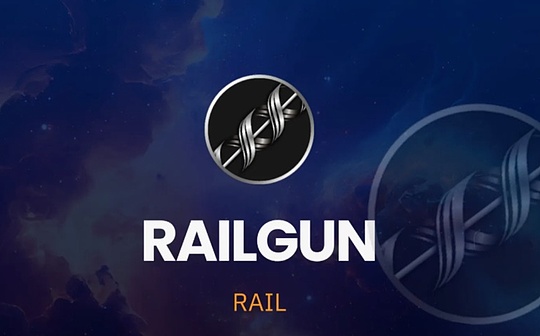
Source: Chain Observation
On the one hand,@Metisl2 is under the construction of the decentralized Sequencer, and on the other hand, @ESPRESSOSYS is a great way to share the SEQUENCER solution based on the modularization. Some people may ask that they must achieve the decentralization of the sorter.What is the difference between “outsourcing module” of Espresso?
In my opinion, the decentralization of the Sequenceer sorter is just the premise of Layer2 basic Infra molding. The real challenge is the construction of a decentralized ecosystem.Come, next, let me talk about my understanding.
Recently, Metis is advancing the decentralization process of Sequencer. Community testing is also underway, once raising the Metis’s main network to Ethereum Top3.
This is actually just the pressure test of the decentralized Sequencer technical layer to ensure that it can operate steadily after the official launch.
1) POS out of block: Metis introduced a Sequenceer pool. The Sequenceer node needs to start 20,000 Metis in turn. The higher participation threshold guarantees the operating ability of the node and the repair ability of the special communication status. At the same time, it alsoThe deterrence came to the possibility of nodes to do evil.
2) Community pressure test: After online SEPOLIA test network, Metis launched a community pressure test in January. At presentSexuality is to lay a way for decentralized Sequenceer to officially online.
3) MEV processing: If the centralized Sequencer can do MEV clip operations through any sorting, but in a decentralized environment, an independent node is required to monitor the sorting of each Sequencer.Do a sample check for the block generated by Sequence to prevent the transaction order from being replaced.
However, it is somewhat passive to be punished by random inspection and supervision. In the later period of MEV confrontation, the Ranger node can become a MEV special pipe like MEV-Boost. MEV controls the “out of control” of MEV by MEV?
4) LSD pledge mining ecology: @enkiprotocol LSD protocol is about to be launched in the Metis ecosystem. The goal of solving the circulation application of the RAWARD after the mining of Sequence Miner’s miner is obviously as the main production source of $ Metis’s main output.Whether the miners are willing to pledge the token and loan mining are important for the subsequent development of the entire $ Metis ecosystem.
In short, in my opinion, the technical problem of decentralized Sequencer is not complicated. It is rare to be a steady decentralized ecological construction, support, benefit distribution and incentive models behind it.
It should be said that technical issues are just the tip of the Iceberg of the decentralization problem of Sequence. A series of services and experiences around the market, ecology, operation, and users are the highlights of the decentralized Sequencer project.
The above describes the challenges in Metis decentralized Sequenceer’s advancement. Based on this, it is easy to understand Espreeso’s shared Sequencer solution. It is easy to understand.
Simply put: @ESPRESSOSYS provides Rollups with a modular SEQUENCER sharing component, which is equivalent to interspersed a Sequence Mempool pre -processing process.
The original user called the RPC request sending a transaction to the SEQUENCER processing center directly. Now you can first pass the Espresso sharing Sequencer center. The ESPRESSO will batch these transaction sort requests in batches, and then return to Layer2 after BATCH.
Espresso has a HOTSHOT equity proof system, which is equivalent to Metis’s POS pledge system to ensure the decentralization of the Sequencer and the design of the corresponding reward and punishment mechanism. Moreoverconsensus.In addition, the ESPRESSO DA function is also a highlight.
Interestingly, if a cross -chain demand submitted by the user must pass the shared Sequencer of Espresso. Theoretically, ESPRESSO can realize the transaction state conversion in the MEMPOOL environment, thereby reducing the transaction loss of cross -chain submission status and the main network interaction.(Lightweight imagination space will be very large)
In short, ESPRESSO and Celestia are similar. The decentralized Sequence Sequency needs that Layer2 needs to be abstracted into a shared sorter “product”, which continues to penetrate the Layer2 ecosystem in a modular height adaptation.
This is a clever approach based on modular thinking. Due to the advantages of low cost, fast and efficient, it will inevitably attract a large number of Layer2 that needs a large number of “one -click hair chain”.
However, in my opinion, the modularization is to reduce the development cost significantly, but if it is excessive, it will lead to the lack of source vitality of subsequent ecological development:
1) The lightweight attributes of the modular component can help. Layer2 developers have a low cost and fast chain, and when the DA capability and Sequency sorter become outsourcing products, the number and change speed of Layer2 chain will also accelerate.
I wrote earlier that when the number of Layer2 projects appeared in batches, comprehensive soft power such as brands, markets, and ecology would become the core of Layer2.At that time, will a layer2 provide DA from Ethereum, whether there is an independent and reliable decentralized Sequencer, and whether there is a mature and stable and growth potential ecological landing is the key.The modularization of the component will accelerate the layer differentiation of the Layer2 market. The head Layer2 and the middle tail Layer2 will follow a very different path; (OP and ZK can use the modularization to drive its Stack strategy to land)
2) After the DA capabilities outsourcing, if the Sequence is outsourced, the PROVER system will also be outsourced in the future. The only card that can compete for a layer2 is the market and operation and maintenance.
There is a paradox here. DA capabilities give up Ethereum to choose low -cost CELESTIA. It is easy to understand. If Layer2 will give the core Sequence tax collection right to outsourcing, how to collect the fees, how to motivate ecological projects, there will be a one, and there will be one.The series of follow -up operation and maintenance problems.
Such Layer2 is very like a “empty shelf”, which is bright and beautiful on the surface. In fact, there is a lack of an independent set of decentralized economy framework. Its market ecology is difficult to have the possibility of doing.For example, using molds can quickly assemble and combine a set of activity rooms, but if you want to build a 100 -meter building, give up the steel frame structure, and try it with the mold?
Of course, I do not deny that the modular paradigm of Celestia and Espresso brings the potential “variable” space brought by the entire Layer1 and Layer2 ecosystem. They reduce the technical threshold and can make the market ecological volume a lot.Only innovative subjects will be rich, and the market will roll out some high -quality projects.Value and significance must have, the difference between Short -Term is still Long -Term.
In the end, the speed of Layer’s 2 chain is faster, and the survival must continue to bring the main network of users, projects, funds, etc., which are effective expanding.







